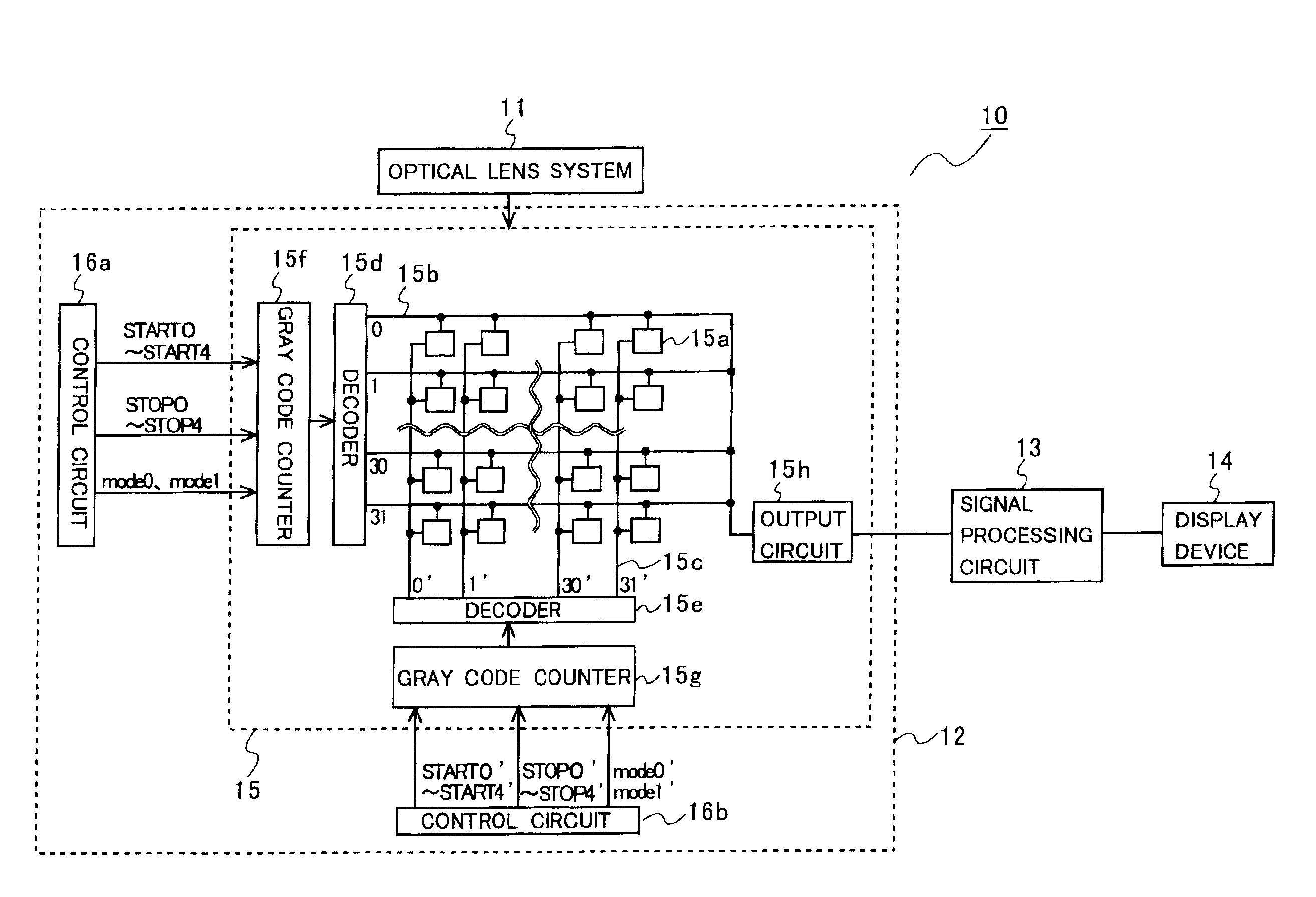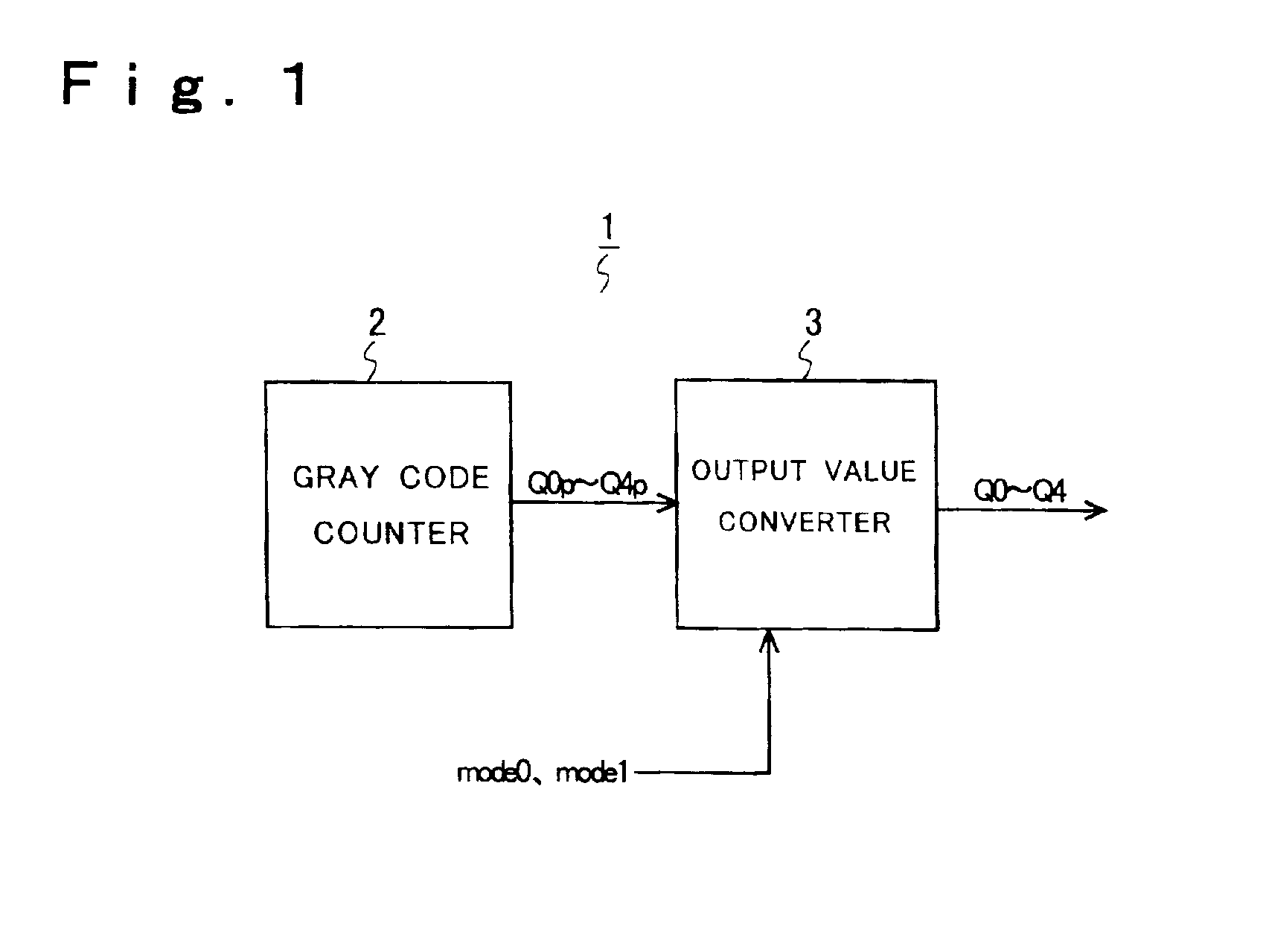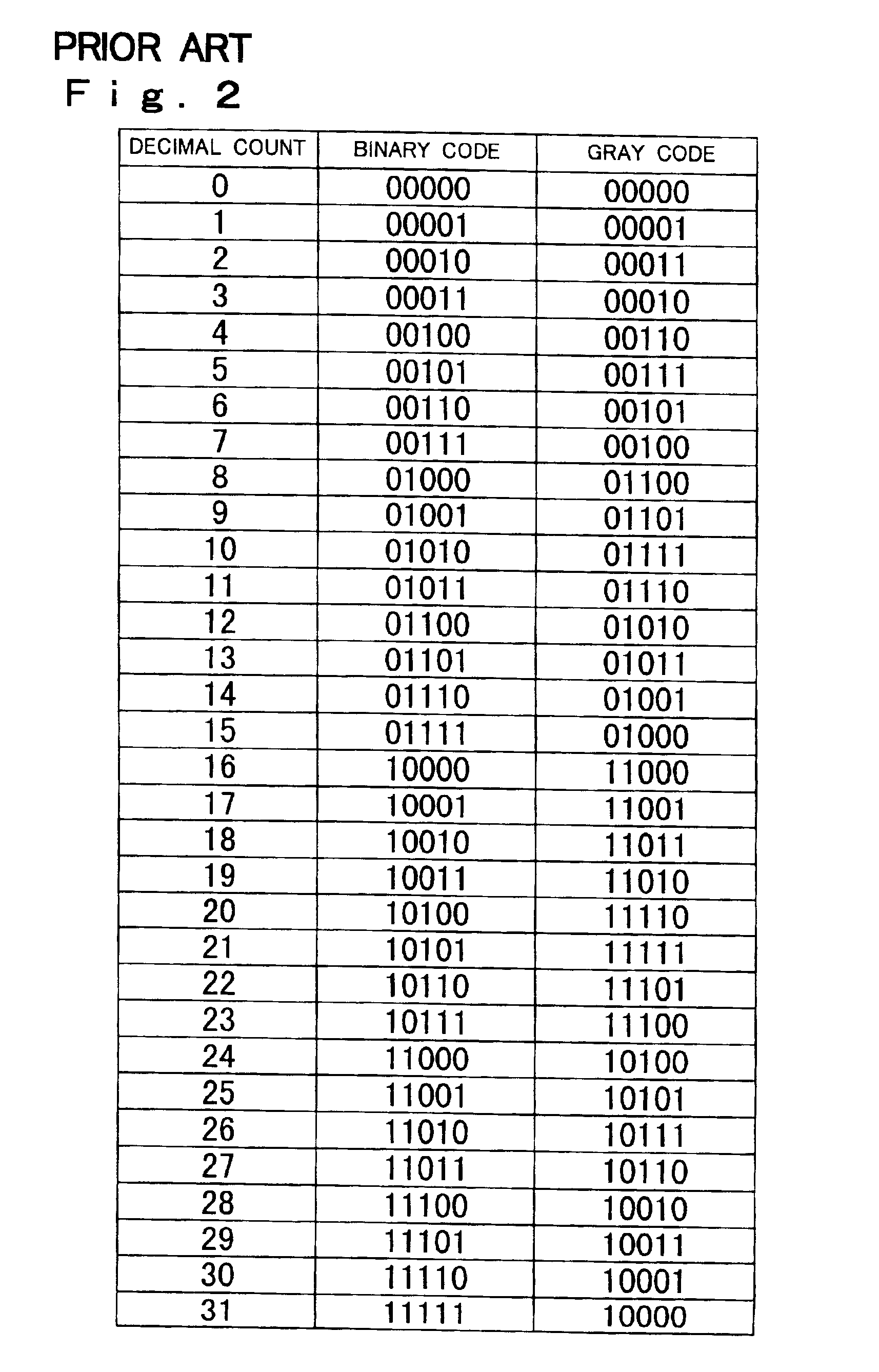Gray code counter
a code counter and code technology, applied in the field of gray code counters, can solve problems such as electrical noise, signal interference, system malfunction, etc., and achieve the effect of reducing electric nois
- Summary
- Abstract
- Description
- Claims
- Application Information
AI Technical Summary
Benefits of technology
Problems solved by technology
Method used
Image
Examples
first embodiment
[0063]When counting is performed with 2M−1 counts skipped at a time and M=1, i.e. when counting is performed with one count skipped at a time, the Gray code counter 1 of the first embodiment counts in this way: 0, 2, 4, 6, . . . . FIG. 3 is a diagram showing decimal counts and the corresponding Gray code in a case where counting is performed with one count skipped at a time. As will be clear from the FIG. 3, in the Gray code obtained by counting with one count skipped at a time, the zeroth bit (the lowest bit) is inverted every time the count changes, and the way the (α+1)th bit belonging to the highest four bits (the fourth to first bits) changes every time the count changes is the same as the way the αth bit belonging to the lowest four bits (the third to zeroth bits) changes as the Gray code counter 2 counts from 0 to 15 (see FIG. 2). Here, where M=1, α is a whole number in the range from 0 to 3.
[0064]When counting is performed with 2M−1 counts skipped at a time and M=2, i.e. whe...
second embodiment
[0078]Next, examples of the configuration of the individual circuit blocks of the Gray code counter of the second embodiment shown in FIG. 8 will be described. First, the output value converter 3′ and the initial setting circuit 7 will be described.
[0079]Now, the relationship, as observed in a case where counting is started at a specified value, between the Gray code output data obtained by consecutive counting and the Gray code output data obtained by counting with 2M−1 counts skipped at a time will be considered.
[0080]When counting is performed with 2M−1 counts skipped at a time and M=1, i.e. when counting is performed with one count skipped at a time, such counting is possible by starting at either “0” or “1,” which are to be dealt with as different cases. FIG. 17A is a diagram showing decimal counts and the corresponding Gray code in a case where counting is started at “0,” and FIG. 17B is a diagram showing decimal counts and the corresponding Gray code in a case where counting ...
PUM
 Login to View More
Login to View More Abstract
Description
Claims
Application Information
 Login to View More
Login to View More - R&D
- Intellectual Property
- Life Sciences
- Materials
- Tech Scout
- Unparalleled Data Quality
- Higher Quality Content
- 60% Fewer Hallucinations
Browse by: Latest US Patents, China's latest patents, Technical Efficacy Thesaurus, Application Domain, Technology Topic, Popular Technical Reports.
© 2025 PatSnap. All rights reserved.Legal|Privacy policy|Modern Slavery Act Transparency Statement|Sitemap|About US| Contact US: help@patsnap.com



